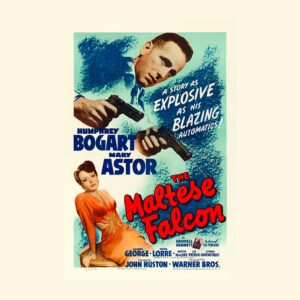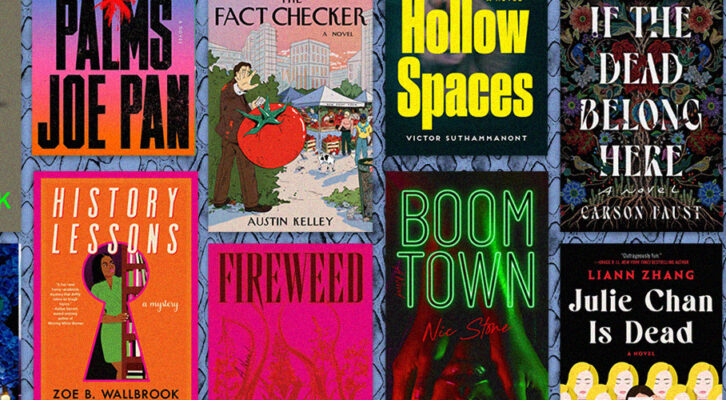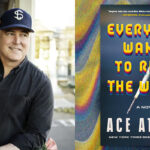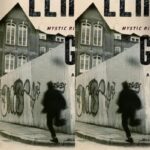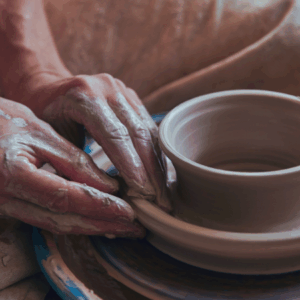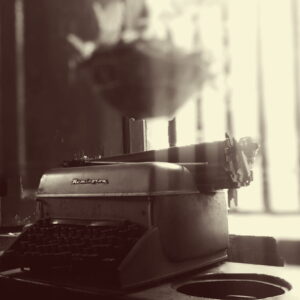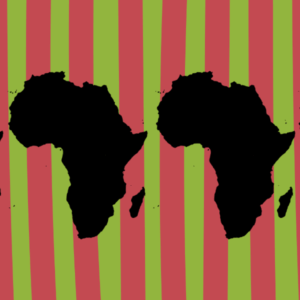
On the Dancing Craze That
Swept Post-WWI Paris
Dominique Kalifa on the Very French “Appetite for Living”
Most books tell us that it was only after the war ordeal, in a France now devastated and in mourning, that what is called the “Belle Époque” was born, out of nostalgia for what had come before. The true story is quite different. Still, the war indeed marked a major rupture, “like an equator that traverses time and divides it,” wrote André de Fouquières. The enormity of what had happened, the scope of the casualties and destruction, were enough to convince everybody that civilization had been shipwrecked, particularly since to the East had risen the “great glimmer” of Communism that represented new hope for many.
Psychiatrists spoke of “dissonance,” an irrepressible rupture that left profound scars in souls as well as on bodies. The fracture caused a profound upheaval in sensibilities. “From that point onward, we must date a new era,” wrote Jean-Richard Blochto Romain Rolland on September 1, 1917. And we know the famous phrase of Paul Valéry in Crise de l’esprit (1919): “We later civilizations, we now know that we are mortal.” In Vienna the same year, Karl Kraus published the first installments of what would become The Last Days of Mankind. Movements as different as Communism, Dada, surrealism, and the Catholic anti-modernism of the Revue universelle (founded by Henri Massis and Jacques Maritain in 1920) reached the same tragic diagnosis: a failure of the old world, a major crisis in understanding and representation, and the absolute necessity of inventing new forms to give hope back to a society in ruins. Rarely has a postwar period been perceived as so overwhelming.
Now almost everything would have to be rethought since everything had changed; so everything must be transformed, proclaimed the champions of cultural demobilization. “When after the war people wanted to resume their places, it was perceived that the rhythm of life had changed,” remembered André Warnod in 1930. “The break was clean between what now existed and what had previously existed.”
Yet such an observation did not invite people to seek refuge in “the world of yesterday,” whose confusion and blindness had led to the disaster. Indeed, the opposite happened. While intellectuals on all sides tried to rethink and re-enchant the world, most people opted to forge ahead, unencumbered by prewar memories. “An internal joy filled everybody because we had been the victors, or at least that was what we believed,” continued Warnod. “Optimism reigned.” André de Fouquières, who before 1914 had been one of the great organizers of high society life (and who intended to remain so) was just as categorical: “After the Great Bloodshed, people rushed to enjoy all life’s pleasures.” Cafés, theaters, music halls, and other festivities of “la vie parisienne” quickly resumed their predominance—and they rarely played the nostalgia card.
The venues had changed too. Montparnasse, which had already begun to shine before the war, assumed preeminence, to the detriment of the outmoded Montmartre or Latin Quarter. The rue de la Gaîté and the Vavin crossroads, which Henry Miller described as the “navel of the world,” supplanted the old streets of Montmartre, rue des Saules, or rue Ravignan. In 1921 the bar-cabaret Boeuf sur le toit opened, a “sort of academy of snobbery,” wrote Léon-Paul Fargue, and it quickly dethroned Maxim’s as the epicenter of Parisian life. Far from replaying prewar music, the new frenzy for pleasure that gripped the city was oriented to the present day. “Paris, as soon as the war was ended, was seized with folly. A brutal cynicism and a desire to seize pleasure at all costs marked this era, with crazes for dancing and female nudity, and a taste forgetting money without working,” explained Warnod. “People rushed into pleasures with a fanatic craving.”
The period exhibited a very lively momentum, symbolized in everybody’s eyes by a fury for dancing—now even more popular because it had been banned during the war. Les dancings (dance halls), seen by the more upright as places of perdition, opened almost everywhere. There were a hundred of them in Paris, half of them located in upper or lower Montmartre, and the other half around Montparnasse and the Champs-Élysées. And the dances that were all the rage—the Charleston, the foxtrot, the two-step, the black bottom, the tango, etc.—were far removed from what had been favored at the start of the century. These dance venues succeeded each other at the pace of an imperious fashion imposing its successive “crazes.”
An appetite for living surged, along with a frivolity that may have exceeded the prewar years.
Dancing (the English term was used) brought along with it other novelties: cocktails, short dresses, cloche hats. Those who did not dance were passionate about films that featured the era’s new stars: Mary Pickford, Douglas Fairbanks, Rudolf Valentino. The war had left French cinema in a disastrous state, so foreign films hugely dominated the market: from 1924 to 1929, more than 70 percent of films distributed in France were American and 12 percent were German. The economic recovery and general enrichment stimulated the advance of cultural consumption and the continual democratization of mass entertainment. At the time there were 4,200 cinemas and 580 theaters that, like the principal music halls and cafés-concerts, were often completely full.
While the radio still remained the prerogative of wireless listeners, the possession of phonographs was spreading; in 1929 more than 10 million phonograph records were sold. Sports events were diversifying and also attracting growing audiences. Spectators rushed to rugby and soccer matches, and the Olympic Games were held in Paris in 1924. The boxer Georges Carpentier and the tennis-woman Suzanne Lenglen became veritable icons. In short, it was a “happy period,” wrote the British journalist Sisley Huddleston, who was passing through Paris in the postwar years.
As peace was restored, which diplomatic efforts tried to guarantee permanently, and economic growth attained record levels—7 percent per annum from 1919 to 1924, then 3 percent in the second half of the decade—an appetite for living surged, along with a frivolity that may have exceeded the prewar years. “Dans la vie faut pas s’en faire, moi je m’en fais pas! (In life you shouldn’t worry, and me, I don’t),” sang a sardonic Maurice Chevalier in the famous operetta Dédé by Albert Willemetz and HenriChristiné, created in 1921 at the Théâtre des Bouffes-Parisiens.
The Moulin Rouge, a major symbol of prewar life and entertainment, had burned down in 1915. But it was rebuilt and reopened its doors at the start of the 1920s, at first below ground in the form of a dance hall, then in 1924 as a music hall. But not the slightest nostalgia was expressed in the new shows, which looked unhesitatingly to the present. The show that accompanied the relaunch in December 1924 was proudly titled New York—Montmartre and offered audiences a discovery of the hectic life of New York, its girls, Wall Street, and Chinatown. Of course some still said, “We miss the epoch of the Moulin Rouge and even the innocent quadrilles (balls),” as the playwright and popular novelist Marcel de Bare regretted in 1925. Yvette Guilbert, who published her memoir in 1927, also mentions the early days of the Moulin Rouge—she had appeared onstage as an English nurse in 1890—yet with no nostalgic tone.
The new management of the music hall tried to combine the old and the new. In 1925, the Mistinguett Revue began with a prologue that evoked Toulouse-Lautrec and the Moulin of earlier days. There was a brief tribute to cancan stars La Goulue, Grille d’égout, Valentin, and Jane Avril before the orchestra quickly switched to frenzied jazz-band music. The Mistinguett years as produced and staged by the new artistic director Jean Charles were resolutely “modern.” This Is Paris, the 1927–1928 revue, or Allo Paris that followed in 1929, substituted jazz-bands and sung tangos, multicolored lighting, and acrobatic fantasies for the outmoded can-can. The traditional quadrille, “danced every day,” as the 1922 program asserted, was better preserved in the Moulin Rouge ball, but many saw it as merely a “melancholy spectacle,” “a moribund tradition.” The quadrille dancers, according to Léon Werth, “resemble dried flowers between the pages of a book.”
The avant-gardes that paraded around Cocteau, Dada, and the surrealists even outshone those of the prewar era, of which they were the natural heirs.
Contrary to commonplaces about the Great War causing the “end of a world,” the French aristocracy actually maintained its solid position, its wealth, and its values. It also continued to lend its tone to worldly society, whose vitality was unabated. At the theater, at the Opéra, in the salons, the golden age of high society kept spinning. Aviation “aces” succeeded the prewar sportsmen and assumed the same aura of celebrity. People were intoxicated by the speed reached by the new automobiles, whose number shot up (from 156,000 in 1920 to 1,109,000 in 1930), and they planned their voyages in sleeping cars or aboard transatlantic liners. Paris kept its leadership in matters of luxury, elegance, and sophisticated entertainment just as before the war—perhaps even more so.
In 1920 the magazine Vogue launched its French edition, and the new generation of fashion designers—Jeanne Lanvin, Jean Patou, Coco Chanel—continued to embody that quasi-organic relation that linked Paris, fashion, and femininity. Maurice de Waleffe and André de Fouquières, two of the principal society figures of 1900, after the war pursued their struggle for “beauty” and lofty French taste. As apostles of masculine elegance, the two men competed for all the twenties prizes: selecting the loveliest “Amazon” and awarding the most beautiful women of France, the 50 best-dressed actresses of Paris, etc. Worldly pleasures had not stagnated after the war, and their effervescence continued to emanate a shimmering mirage in which the ancestral values of the aristocracy mingled with the cachet of la vie parisienne.
The same was true of all aspects of cultural and artistic life. The avant-gardes that paraded around Cocteau, Dada, and the surrealists even outshone those of the prewar era, of which they were the natural heirs. Moreover, many of the old artists were still there, starting with the poets and painters of the 1910s, who began to benefit from commercial success. But they had been joined by a troupe of new arrivals—novelists, painters, sculptors, photographers—whether exiles, émigrés, or quite simply creators looking for a propitious location.
As at the start of the century, Paris continued to attract artists from around the world, and thus the phenomenon became accentuated throughout the decade: Russians, Poles, Hungarians, Germans were fleeing the troubles and instability affecting their home countries, and Americans, whom the war had familiarized with France, became increasingly numerous. The “very profitable agitation” (André Warnod’s expression) that brought so many different creators to Paris even intensified and prolonged, with no apparent break, the attraction to the city that had reigned before the war. This diverse group of artists, who did not necessarily share the same aesthetic inspiration but whose innovations turned painting upside down, was christened by André Warnod in a January 1925 article in Comoedia as the “Paris School.”
The group was eclectic, including painters like Chagall, Soutine, Kisling, Pascin, Modigliani, Foujita, and Zadkine, but also art dealers (Kahnweiler, Léopold Zborowski) and collectors (Wilhelm Uhde, Peggy Guggenheim, Leo and Gertrude Stein). “This crowd of foreign artists from all corners of the world are coming to breathe the air of freedom among us . . . [and they] provoked by contact with our own artists a very important movement in painting.” For Warnod this constant and extraordinary emulation was crucial. That is why this period remained for him inseparable from the one that preceded it. Many of these artists had actually arrived in Paris before the war, as proved by his own memories, running from 1902 (date of his arrival at the Butte de Montmartre) to the end of the 1920s.
But the painters of the Paris School were not the only ones to enjoy the freedom of the capital. We have to add surrealists from all over the world; composers like Martinu, Mihalovici, and Conrad Beck; and American writers of the “Lost Generation” like F. Scott Fitzgerald, Dos Passos, Cummings, Hemingway, and many others. The magazine Paris Montparnasse, edited by Henri Broca, became the platform of this movement starting in 1929. Paris was more than ever the international capital of the art scene, though this was deplored by those like Camille Mauclair who denounced Les Métèques contre l’art français (Immigrants versus French art). From this intense artistic life (which had now migrated to Montparnasse) there emanated the same bubbling creative freedom, independence, and sexual permissiveness as before. For Gertrude Stein, who had lived in Paris since 1904 and around whom gravitated many from the cultural élites, the city continued to be the homeland of arts and letters. “So Paris was the national background for the 20th century.”
__________________________________
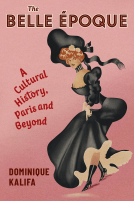
Excerpted from The Belle Époque: A Cultural History, Paris and Beyond by Dominique Kalifa. Copyright (c) 2021 Columbia University Press. Used by arrangement with the Publisher. All rights reserved.
Dominique Kalifa
Dominique Kalifa (1957-2020) was professor of history and director of the Center for Nineteenth-Century History at the University of Paris 1 Panthéon-Sorbonne. His books include Vice, Crime, and Poverty: How the Western Imagination Invented the Underworld (Columbia, 2019).









